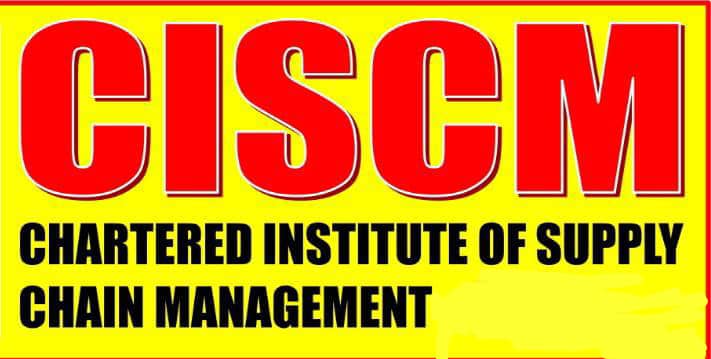
In light of my appointment as Eminent Member and Subject Matter Expert on Innovations & Business Development with the Chartered Institute of Supply Chain Management (CISCM), I am pleased to share with my readers an important contribution from the Institute.
Supply chains are often discussed in fragments, procurement here, logistics there. Yet the real power lies in viewing them as integrated systems that sustain businesses, nations, and global trade. In truth, supply chains are present in virtually every commercial activity. The shopkeeper depends on wholesalers and distributors. A barber depends on the makers of clippers, electricity providers, and suppliers of creams and oils. A software company, which seems purely digital, is still tied to a chain of servers, cables, devices, and cloud providers that make their service possible.
Every one of these examples illustrates a simple truth: supply chains are everywhere. They underpin how we work, how we trade, and even how we live. This is why the subject matter of supply chain management is everybody’s business. If you think supply chain isn’t your business, you could be missing a key part of the bigger picture.
I’ll lastly add that leadership in supply chains matters. Not just at the government or multinational level, but within SMEs, cooperatives, and even start-ups. Leaders set the tone for reliability, transparency, and accountability. The ability of a small cooperative to store grain properly, or of a transport manager to honour delivery commitments, can determine whether an entire chain holds or breaks. Leadership is the hidden driver of supply chain resilience.
This is why CISCM’s work resonates so strongly with me. The article that follows, prepared by CISCM, goes deeper into this subject, and I encourage every reader, whether entrepreneur, policymaker, or consumer, to see themselves as part of the supply chain story. Because until we take supply chains seriously, we will continue to underestimate what truly drives prosperity.
I trust readers will find this publication as timely and instructive as I did.
__________________________________________________________
What is Supply Chain Management?
At the most fundamental level, supply chain management (SCM) is management of the ?ow of goods, data, and ?nances related to a product or service, from the procurement of raw materials to the delivery of the product at its ?nal destination. Although many people equate the supply chain with procurement or logistics, procurement or logistics is actually just one component of the supply chain.
Supply Chain Management traditionally, comprises the following activities; material planning, procurement, inventory and material handling, operations or processing or manufacturing, transportation, logistics, suppliers, wholesalers, retailers, and consumers. Its also Includes information flow and applications of information for all parties involved in product or service creation, order ful?llment, and information tracking.
Today’s digitally based Supply Chain Management systems include material handling and software for all parties involved in product or service creation, order fulfillment, and information tracking?such as suppliers, manufacturers and wholesalers. Supply chain activities span procurement, product lifecycle management, supply chain planning (including inventory planning and the maintenance of enterprise assets and production lines), logistics (including transportation and fleet management), and order management. Supply Chain Management can also extend to the activities around global trade, such as the management of global suppliers and multinational production processes.
History of Supply Chain Integration
Supply chains have existed since ancient times, beginning with the very first product or service created and sold. With the advent of industrialization, SCM has become more sophisticated, allowing companies to do a more efficient job of producing and delivering goods and services. For example, Henry Ford’s standardization of automobile parts was a game-changer that allowed for the mass production of goods to meet the demands of a growing customer base.
Over time, incremental changes such as the invention of computers have brought additional levels of sophistication to SCM systems. However, for generations, SCM essentially remained a linear, silo-based function that was managed by supply chain specialists. The internet, technological innovation, and the explosion of the demand-driven global economy has changed all that. Today’s supply chain is no longer a linear entity. Rather, it’s a complex collection of disparate networks that can be accessed 24 hours a day. At the center of these networks are consumers expecting their orders to be fulfilled?when they want them, the way they want them and where they want them.
We now live in a time of unprecedented global business and trade, not to mention continual technological innovation and rapidly changing customer taste and preferences and attendant expectations. Today’s best supply chain strategies call for a demand-driven operating model that can successfully bring people, processes, and technology together, around integrated capabilities to deliver goods and services with extraordinary speed and accuracy.
Though SCM has always been an enterprise fundamental, the supply chain today is more vital than ever as a marker for business success. Companies that can effectively manage their supply chain to adapt to today’s volatile and ever-changing, technology-driven business environment are the ones that will survive and thrive.
What is the conventional meaning of Supply Chain Integration?
Supply chain integration can be defined as a close calibration and collaboration within a supply chain, mostly with the application of shared management information systems. A supply chain is made from all parties that participate in the completion of acquisition, like the resources, raw materials, manufacturing of the product, shipping of completed products and facilitating services.
The concept of Conventional Supply Chain Management (SCM) is based on Five (5) core tenets:
- The first is that practically every product that reaches an end user represents the cumulative effort of multiple organizations. These organizations are referred to collectively as the supply chain.
- The second idea is that while supply chains have existed for a long time, most organizations have only paid attention to what was happening within their “four walls” or within their “silos”.
- The flows and information flows within processes for value creation.
- The evolution of the existing supply chains and its management has been wholly centered on certain identified management and operational activities’ silos such as Planning, Sourcing/Procurement, Processing/Operations/ Manufacturing, Storage/Warehousing/Inventory, Supplies/Distributions, Transportation/Logistics, Sales & Marketing, Customer Service, Consumer Management and Reverse processes.
- The definitions and focus of supply chains and its management has been hugely based on goods and services.
The Change Theory
The global socio-economic and business ecosystem is being driven by existential challenges of VOLATILITY, UNCERTAINTY, COMPLEXITY, and AMBIGUITY. These phenomena have influenced the tectonic shift from conventional Supply Chain Management, with the corresponding features mentioned above, to Integrated Supply Chain Management which is an enhanced position of Supply Chain Integrations called INTEGRATED SUPPLY CHAIN MANAGEMENT (ISCM). At the World Economic Forum 2014, it became very clear that the concept of Integrated Supply Chain Management is the new paradigm that will provide sustainable and reliable solutions to the global economic and business challenges which confront many countries today.
What is Integrated Supply Chain Management?
CISCM ISCM Definition Tangent (Reference – World Economic Forum, 2014)
ISCM requires collaboration and the sharing of data using a strong technology infrastructure which leads to streamlined and efficient activities. Integrating the supply chain improves overall transparency and traceability, which is becoming increasingly significant for today’s discerning consumers in the globalised market. A fully integrated supply chain is a requisite strategy for countries who wish to become or remain competitive.
Developing countries transnational corporations (TNCs) can take advantage of the best-available human or physical resources in different countries through integrated supply chain with a view to maintaining their competitiveness by augmenting productivity and minimizing costs.
Definition of Integrated Supply Chain Management (ISCM) by The Chartered Institute of Supply Chain Management (CISCM)
As astutely put by Professor Jonathan Opata (FCISCM), essentially, the Institute (CISCM) views ISCM as;
- A centralised system of collaborated culture of leadership and policy to gain stakeholder utility, value for money and a conduit for prosperity and economic development; OR
- A value stream working relationship through each value stream using enterprise resource for optimisation and performance. The concept involves sharing risks and rewards among value stream partners in a way perceived by all as fair.
The Core Principles of ISCM
- The Concept of the Remote Cause – this is referred to as the principle of ensuring that before any activity is done, there must be a conscious and detailed review of all established norms, processes, and procedures to gain wholistic understanding of the environment within which an activity, decision, and/or action is taken. This can also be referred to as the source of the source of the sources. The essence of doing this is to ensure the attainment of efficiency and optimization which result in Absolute Value.
- The Concept of Absolute Value – this also refers to the actual gain that an activity, decision and/or action results in. This can be called the actual life-cycle composite gain because it has direct correlation to;
- Predictive results – The maximum returns
- Progressive results – The accelerate rate of returns which is devoid of regression
- Sustainable results – The returns of a life-cycle (business or project)
But at all times, the primary objective is to achieve sustainable results.
To be Continued…
Authored by the Chartered Institute of Supply Chain Management – Ghana (CISCM)

The post Introductory to Integrated Supply Chain Management appeared first on The Business & Financial Times.
Read Full Story














Facebook
Twitter
Pinterest
Instagram
Google+
YouTube
LinkedIn
RSS